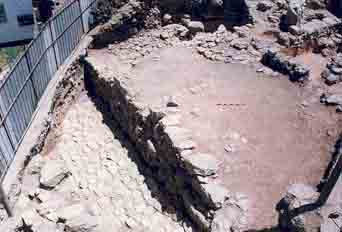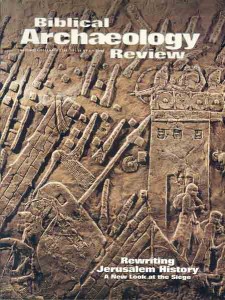But No Sign of King David

Excavators in Hebron have uncovered the city’s earliest remains to date: a 20-foot-wide stretch of wall from the third millennium B.C. (Early Bronze Age III). They have also unearthed an eighth-century B.C. four-room house—but nothing yet from the tenth century B.C., when the Bible says the city served as King David’s capital before his capture of Jerusalem.
The third-millennium wall enclosed “the first fortified city of Hebron,” says Emanuel Eisenberg of the Israel Antiquities Authority, who led the salvage excavation in northeastern Hebron, at Tel Rumeida. Constructed of stones weighing as much as one and a half tons each, the newly discovered wall is preserved to a height of 10 feet. Eisenberg estimates that it originally stood about 25 to 30 feet tall. Beside the wall are the remains of the Middle Bronze Age (2200–1550 B.C.) fortifications, parts of which were also excavated in earlier decades. According to calculations made in previous excavations, the ancient city covered between six and eight acres.
The newly discovered wall was found close to the surface on a hillside. Eisenberg explained that the slope created challenges for his team. “The strata are not always layered one on top of the other but are often stepped, so instead of one layer always following another, the layers cut into one another, making it more difficult to put together all the archaeological finds.”
Already a library member? Log in here.
Institution user? Log in with your IP address.

